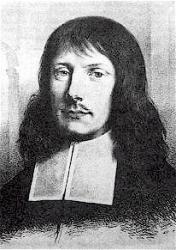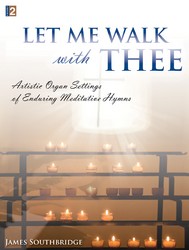- |
User Links
Sieh, hier bin ich Ehrenkönig
Representative Text
1 Sieh, hier bin ich,
Ehrenkönig,
lege mich von deinen Thron;
schwacht Thränen,
kindlich Sehnen
bring ich dir, du Menschensohn!
Laß dich finden,
laß dich finden
von mir, der ich Asch und Thon.
2 Sieh doch auf mich!
Herr, ich bitt dich;
Lenke mich nach deinen Sinn.
Dich alleine
Ich nur meine,
dein erkaufter Erb ich bin.
Laß dich finden,
laß dich finden;
gib dich wir, und nimm mich hin.
3 Ich begehre
nichts, o Herre!
als nur deine frei Gnad,
die du giebest
den du liebest
und der dich liebt in der That.
Laß dich finden,
laß dich finden:
der hat Alles, wer dich hat.
4 Himmelssonne,
Seelen-Wwonne!
unbestecktes Gotteslamm!
in der Höhle
meine Seele
suchet dich, o Bräutigam!
Laß dich finden,
laß dich finden,
starker Held aus Davids Stamm!
5 Hör, wie kläglich,
wie beweglich
dir die treue Seele singt;
wie demüthig
und wehmmüthig
deines Kindes Stimme klingt!
Laß dich finden,
laß dich finden;
dann mein Herze zu der dringt.
6 Dieser Zeiten
Eitelkeiten,
Reichthum, Wollust, Ehr und Freud,
sind nur Schmerzen
meinem Herzen,
welches sucht die Ewigkeit:
Laß dich finden,
laß dich finden,
großer Gott, ich bin bereit!
Source: Evang.-Lutherisches Gesangbuch #27
Author: Joachim Neander
 Neander, Joachim, was born at Bremen, in 1650, as the eldest child of the marriage of Johann Joachim Neander and Catharina Knipping, which took place on Sept. 18, 1649, the father being then master of the Third Form in the Paedagogium at Bremen. The family name was originally Neumann (Newman) or Niemann, but the grandfather of the poet had assumed the Greek form of the name, i.e. Neander. After passing through the Paedagogium he entered himself as a student at the Gymnasium illustre (Academic Gymnasium) of Bremen in Oct. 1666. German student life in the 17th century was anything but refined, and Neander seems to have been as riotous and as fond of questionable pleasures as most of his fellows. In July 1670, Theodore Under-Eyck came to Breme… Go to person page >
Neander, Joachim, was born at Bremen, in 1650, as the eldest child of the marriage of Johann Joachim Neander and Catharina Knipping, which took place on Sept. 18, 1649, the father being then master of the Third Form in the Paedagogium at Bremen. The family name was originally Neumann (Newman) or Niemann, but the grandfather of the poet had assumed the Greek form of the name, i.e. Neander. After passing through the Paedagogium he entered himself as a student at the Gymnasium illustre (Academic Gymnasium) of Bremen in Oct. 1666. German student life in the 17th century was anything but refined, and Neander seems to have been as riotous and as fond of questionable pleasures as most of his fellows. In July 1670, Theodore Under-Eyck came to Breme… Go to person page >Text Information
| First Line: | Sieh, hier bin ich Ehrenkönig |
| Author: | Joachim Neander |
| Language: | German |
| Notes: | Polish translation: See "O wspanialy Królu chwaly" |
| Copyright: | Public Domain |
English
German
- A Collection of Hymns: designed for the use of the Church of Christ #L60
- Allgemeine Lieder-Sammlung: zum Gebrauch für den privaten und öffentlichen Gottesdienst. (6th Aufl.) #179
- Ausgewaehlte Psalmen und Lieder fuer kirchlichen und haeuslichen Gebrauch #d311
- Das Geistliche Saitenspiel: oder, Eine Sammlung auserlesener, erbaulicher, geistreicher Lieder zum Gebrauch aller Gottliebenden Seelen, insonderheit für dei Gemeinen der Evangelischen... (1st Aufl.) #321
- Das Gemeinschaftliche Gesangbuch: zum gottesdienstlichen Gebrauch der Lutherischen und Reformirten Gemeinden in Nord-America. (1st.. Aufl) #265
- Das kleine Davidische Psalterspiel der Kinder Zions #a424
- Das kleine Davidische Psalterspiel der Kinder Zions #aa424
- Das kleine Davidische Psalterspiel der Kinder Zions #a424
- Das Kleine Davidische Psalterspiel der Kinder Zions von alten und neuen auserlesenen Geistes-Gesängen allen wahren heyls-begierigen Säuglingen der Weisheit, insonderheit aber denen Gemeinden des Herrn #422
- Das Kleine Davidische Psalterspiel der Kinder Zions: von alten und neuen auserlesenen Geistes-Gesängen allen wahren heils-begierigen säuglingen der weisheit, infonderheit aber denen Gemeinden ... #424 10 shown out of 113
Notes
Suggested tune: SIEH HIER BIN ICH
Sieh hier bin ich Ehren König. J. Neander. [Supplication.] This beautiful and searching hymn is traditionally said to have been written in 1677 during enforced absence from his duties. Founded on Ps. lvii. 7 ("God, my heart is ready, to sing and to praise "). First published in his Glaub-und Liebesübung:auffgemuntert durch einfältige Bundes-Lieder und Danck-Psalmen. Bremen, 1680, p. 139, in 6 stanzas of 6 lines, entitled “Encouragement to Praise." In the Unverfälschter Liedersegen, 1851, No. 341. Translated as:—
1. Behold me here, in grief draw near. By Mrs. Findlater in the 1st Ser., 1854, of the Hymns from the Land of Luther, p. 44 (1884, p. 46). This follows the text of Knapp in his Evangelischer Lieder-Schatz, 1837, No. 2060 (1865, No. 1682), omitting st. iv. St. v. of this version is not by Neander, and had appeared in the Württemberg Gesang-Buch, 1791, No. 464, thus:—
"Tief in Nöthen Lass mich beten,
Kindlich beten, Herr, vor dir!
Ach, erscheine, Wenn ich weine,
Bald mit deiner Hülfe mir!
Lass dich finden! Lass dich finden!
Denn mein Herz verlangt nach dir!"
Included in full in Cantate Domino, Boston, U. S., 1859, and omitting Mrs. Findlater's st. iv. in the Methodist New Connexion Hymn Book, 1863.
2. Here behold me, as I cast me. A very good translation, omitting st. iv., v., by Miss Winkworth, in her Lyra Germanica, 2nd. Ser., 1858, p. 170; repeated in her Chorale Book for England , 1863, No. 122. The form in Spurgeon's Our Own Hymn Book, 1866, beginning "Look upon me, Lord, I pray Thee," consists of stanzas ii. and iii.
Other translations are: (1) "King of glory, see before Thee,” from Knapp, by R. Massie in the British Herald, May, 1865, p. 68, repeated in Reid's Praise Book, 1812. (2) "Now behold me, King of glory," in the German Reformed Guardian, June 1865, p. 173, signed "S. T." [Rev. James Mearns, M.A.]
--Excerpts from John Julian, Dictionary of Hymnology (1907)


 My Starred Hymns
My Starred Hymns




